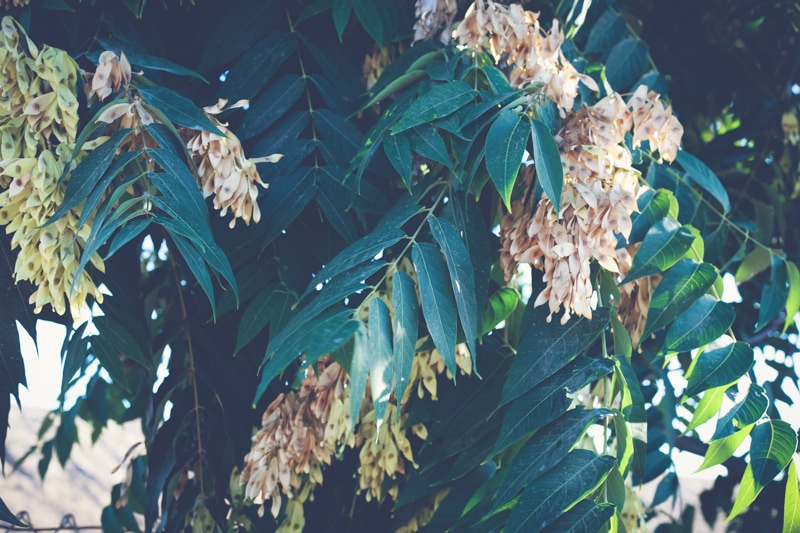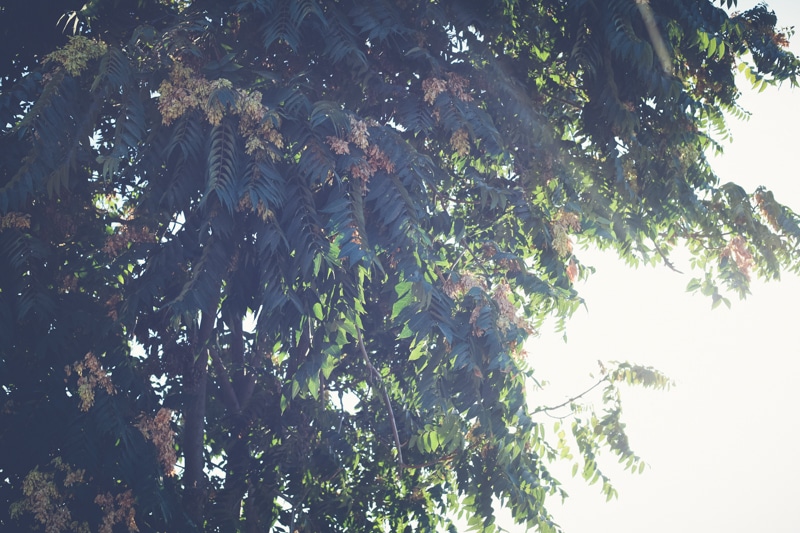


From the desert to the beaches, the mountains to the valleys, San Diego is a diverse city filled with a vast assortment of trees. With our sunny, mild climate, practically any tree can grow here with the proper care. In fact, most of the trees that you see aren’t even native to this region. All those palms — foreigners! Those eucalyptus trees that seem to be along every freeway and in every neighborhood — foreigners! Yes, only a few trees can actually call themselves true San Diego “locals.”
Some foreign trees making great additions to our San Diego terrain, but others are deemed invasive species that are detrimental to the native ecosystem or just plain annoying to people. What exactly is an invasive tree? Invasive plants are defined as “any indigenous or exotic plant species having a detrimental effect on the growth of commercial tree species, giving rise to particular management problems or growing where it is not wanted.” (Le Roux, 1981) So basically, it’s a foreign plant (which trees are considered to be plants) that people, as well as the natural indigenous ecosystem, have issues with.
Quite a few trees in San Diego are classified as invasive species, but some aren’t as bad as others. Many people wouldn’t even think about them being invasive, like the Canary Island date palm. This is a high-class invasive plant that is commonly added to landscape and can cost thousands of dollars. But some invasive trees aren’t as dignified as the date palm. In fact, there are areas of the world where they are strictly prohibited and required to be controlled or destroyed. So in our city, what unfortunate tree tops LC Tree Service’s list of San Diego’s Most Annoying Tree?
TREE-OF-HEAVEN
Ailanthus altissima


The tree-of-heaven! It has the most divine name, but don’t be fooled — it’s no angel. Originating from Asia, the tree-of-heaven is also known as Ailanthus altissima, or ailanthus for short. In urban areas where it be found growing in sidewalk cracks or along buildings, it has been dubbed the ghetto palm. Some may even call it the more appropriate name — the tree-from-hell. This is a tree that is notorious for evoking anger in any property owner who has even the most minute concern for their landscape. It’s a tree whose name you search on the internet, only to find an exhaustive list of negative articles that go on and on about how bad this tree is.
Why would one tree receive so much hate? The tree-of-heaven is practically a weed in tree form! Like a weed, you don’t need to plant them, they just pop up. And they keep popping up and taking over — unless proper protocol is taken. This tree species truly embraces the characteristics of an invasive plant. It spreads easily, grows quickly, pushes out the already existing plants, and is one of the hardest trees in San Diego to control. If left to unmanaged, it can quickly end up creating a widespread thicket that trumps over all other vegetation, thanks to its vigorous reproductive nature and toxic nature that inhibits the growth of other plants in its surroundings — sort of like the neighborhood tree bully.
At first glance, a mature tree-of-heaven, when manicured, can actually present itself as a good-looking tree that exhibits a tropical feel. It looks very similar to the mimosa silk trees that are as common in Hawaii as eucalyptus trees are in San Diego. It’s easy to envision the tree-of-heaven nestled among a handful of palms and some giant white bird of paradise plants at a beach resort. However, that would never happen because 1) we have never met anyone who intentionally planted a tree-of-heaven on their property and 2) no high-end resort or property would ever want this tree as part of their ornate landscape. To find a tree-of-heaven that has actually been trimmed is EXTREMELY rare. Most just end up growing wild and messy. As a tree service company, we typically find the tree-of-heaven growing in industrial or commercial properties where meticulous landscaping isn’t exactly high on the priority list. It is also common to see them on residential properties where an unfortunate homeowner thought they were bestowed with a free tree that sprouted up out of nowhere. So they let them grow, only to continue seeing more and more little trees spring up within a couple of years.


Tree-of-heaven cluster growing in a commercial property
Identification
The tree-of-heaven grows tall with a widespread, draping canopy of dark green leaves and pale brownish-pink clusters of what looks like flowers, but are winged seeds. It is similar in appearance to a few common ornamental trees in San Diego that also have the same pinnately compound leaf structure, such as the black walnut tree and Tipuana tipu. But there is an easy way to discern if it indeed is the tree-of-heaven. This is a tree that loves family! It is typically found in family clusters or colonies where there is a full-sized mother tree with her little baby trees in close proximity — and in systematic line, nonetheless. Sometimes a young tree-of-heaven can be found discreetly nestled among other trees and plants, and sure enough, if you look around, a mature tree can be found just a few houses down the street.
Mature trees can reach heights of 60 to 80 feet and are identifiable by their long pinnately compound leaves that can grow up to 4 feet long. These leaves have a central stem and two rows of 2- to 7-inch dark green pointed leaflets. The leaflets are fairly large with smooth edges, and when crushed, they give off a faint smell that some describe as 1) a mixture of citrus and skunk, 2) burnt rancid peanuts, or even 3) cat urine. If you spot one of these trees and are feeling adventurous, you can give its foliage a sniff, and see what you think. Citrus-y skunk? Burnt peanuts? Or cat urine?
The bark of the tree-of-heaven is light brown to pale grey when mature, and has grey branches that are smooth with raised dots which later mature into fissures. In the warmer months, yellowish-green flower clusters appear. But these flowers aren’t your typical blooms that you would want to add to a pleasant-smelling bouquet. They— just like the leaves — smell horrible!
Reproduction
The tree-of-heaven possesses a prolific nature and a tenacious survival attitude. It has the potential to cast out over 300,000 seeds annually that are brilliantly designed to fly. Each seed is conveniently tucked inside a winged seed pod called a samara that can easily travel long distances with the wind. But even with the millions of tree-of-heaven seeds that get dispersed throughout San Diego each year, they aren’t even necessary for propagation. Established trees also covertly shoot out lateral roots (roots that grow horizontally), which push out new sprouts down the line. That’s why you will typically find tree-of-heaven clusters growing in a straight line. If left unmanaged, these new sprouts rapidly grow into full-size trees with absolutely no human care. And even if the mother tree is cut down, these youngsters can still survive and thrive — even in the middle of a San Diego drought.
Adding to its aggressive reproductive nature, the tree-of-heaven also has the capability of dominating an area by inhibiting the growth of other plants. Present on all parts of the tree, but strongest on the bark and roots, is a toxic allelopathic chemical, called ailanthone, which poisons other neighboring plants or any new seed looking to join the neighborhood. In some studies, ailanthone extracted from the tree-of-heaven was even able to kill 100% of certain plant seedlings. I guess you could describe this species as an introverted passive-aggressive.


Management
While the tree-of-heaven may be surrounded by a plethora of negative attention, its resilience and refusal to go down without a fight is worth applauding. The tree-of-heaven has an amazing capability of survival. Unlike most trees you see around San Diego, if you mess with this tree, it fights back. No, it doesn’t slap you with its branches, but if you cut it or injure it…it knows! And in a survival response, it shoots out dozens of lateral roots underground to help “pass down the family genes.”
If you noticed that you have one of these “bad boys” creeping into your property, what do you do? Have no fear. There are methods to controlling them…which is just a nicer way of saying…annihilating them. Do not attempt to remove it yourself. The only exception would be if it is a brand new sprout that is the first of its kind in the area. If other tree-of-heavens are close by, pulling out a baby sprout would be pointless, because underneath is already an intricate root system that will simply replace what you took out.
The problem with attempting to remove a tree-of-heaven like a “normal” tree lies in the roots. You can take out the mother tree along with the stump, but in a few months, you’ll just see her little saplings lurking through the ground. Pull them out, and then a few months later, what do you know? More mini clones popping out from the ground! For the property owner, it’s a frustrating ordeal.
In order to successfully remove a tree-of-heaven, herbicide must be used to first kill the tree. However, this should be performed by a professional tree service company since a strong herbicide has to be used in order to effectively kill the tree. If other plant species are present, then extra precaution must be taken in order to avoid poisoning neighboring plants. Once the tree has deceased, the removal process can continue as normal.



